Independence Returns
September 9 – October 2, 2011
Opening Friday September 9, 6-9PM
w/ live projections & performances
featuring works by:
Peggy Ahwesh, Michel Auder, Agnes Bolt, Martha Colburn, Raul Vincent Enriquez, Bradley Eros, James Fotopoulos, Su Friedrich, Andrew Lampert, Jonas Mekas, Allison Somers, and Nick Zedd
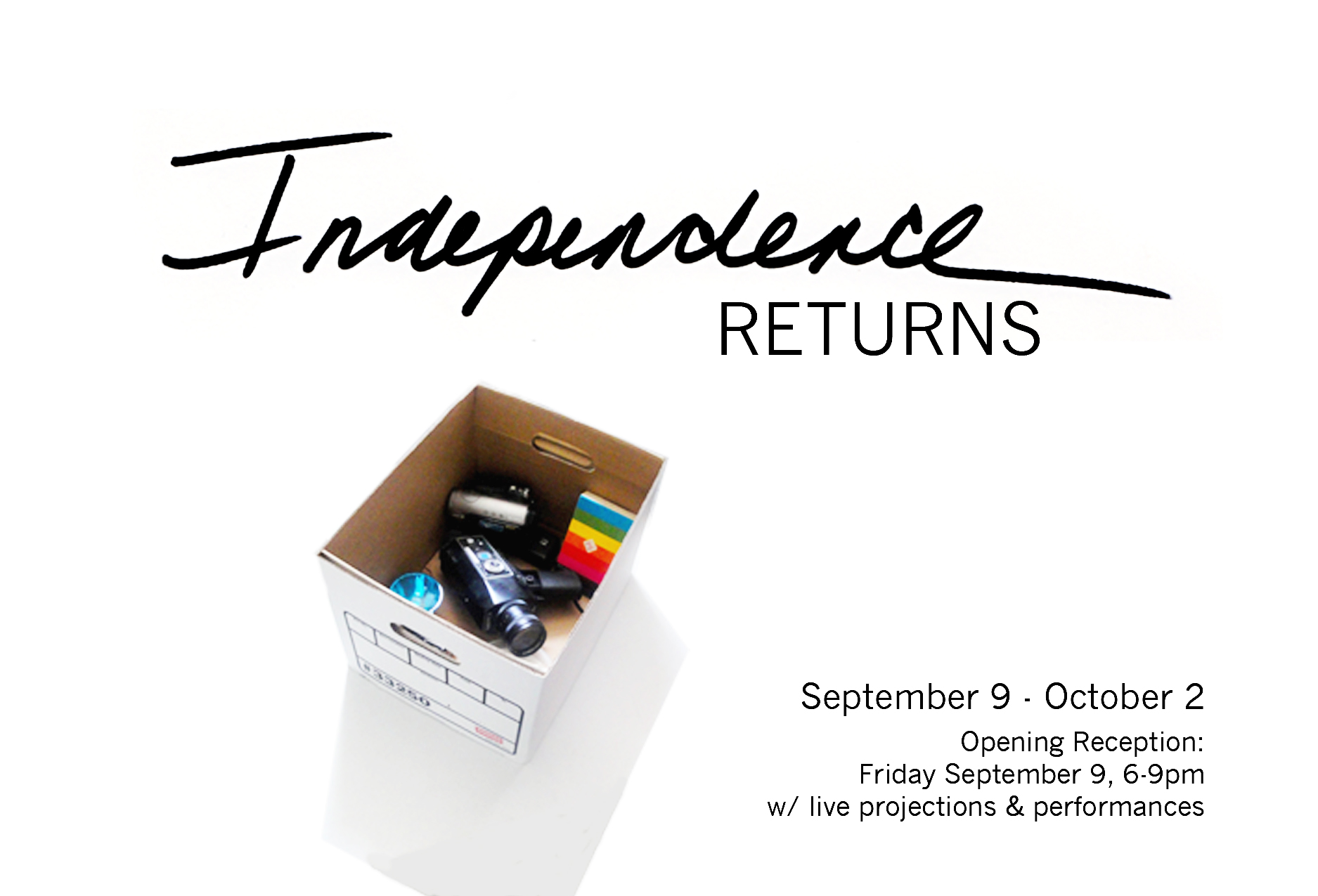
INDEPENDENCE, Microscope Gallery’s inaugural exhibit, returns to kick off our second year with an exciting line up of new works by emerging and internationally recognized artists. All of the artists have previously exhibited or screened at Microscope and some will also be featured in the upcoming season. With nine exhibitions and over seventy screenings and performances behind us, our focus continues to be on presenting film, video, sound, performance and other time-based artists of uncompromising artistic vision.
The twelve artists in Independence Returns, many who have been working for decades, are fearless risktakers, who do what they do without regard for current trends or expectations. As a group they are best known for their work with moving images, including several experimental filmmakers who have revolutionized the medium. Each also works with other media and their drawings, paintings, photographs, collage, installation and other works will be on exhibit along with a projected video program. Collectively these artists have influenced over five decades of the New York art scene, from early Soho, Warhol’s Factory, Lower East Side, Williamsburg/Greenpoint to Bushwick today. Their works are exhibited and screened worldwide and are in the permanent collections of institutions including MoMA, the Whitney Museum, Centre Pompidou Paris, Museum Ludwig Cologne among many others.
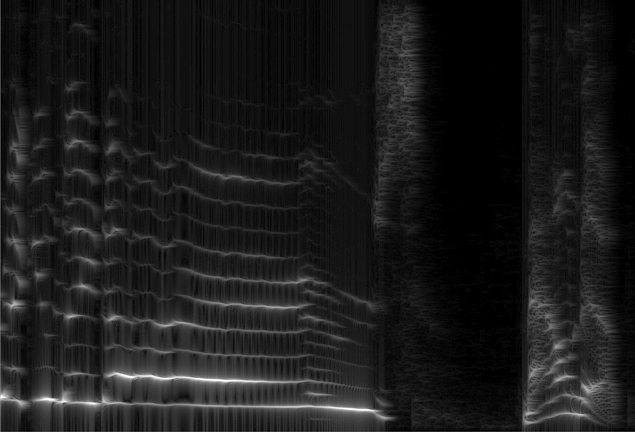
My Brother’s Voice, by Allison Somers in collaboration with Adam Somers, customized audio imaging software, archival print, 2010
INDEPENDENCE RETURNS
Video Program
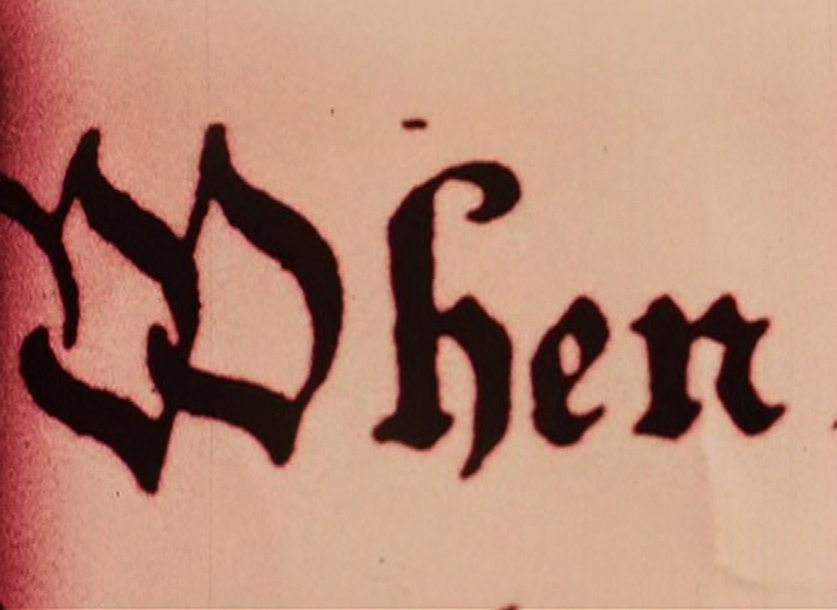 When
When
Jonas Mekas, 16mm film transfer to video, color, silent, 2 minute 23 seconds, 1968, w/ Robert Kramer
The world premiere of a film made in 1968. With appearance by the filmmaker Robert Kramer.
 Do You Love Me ?
Do You Love Me ?
Michel Auder, video, color, sound, 10.5 minutes, 2011
A just completed video of haunting intensity and beauty by one of the masters of no-holds-barred personal video. Auder allows the footage from different eras to overlap and interplay to create a multi-layer window on his present and his past. “Do You Love Me?” Is it a question he is asking or answering?
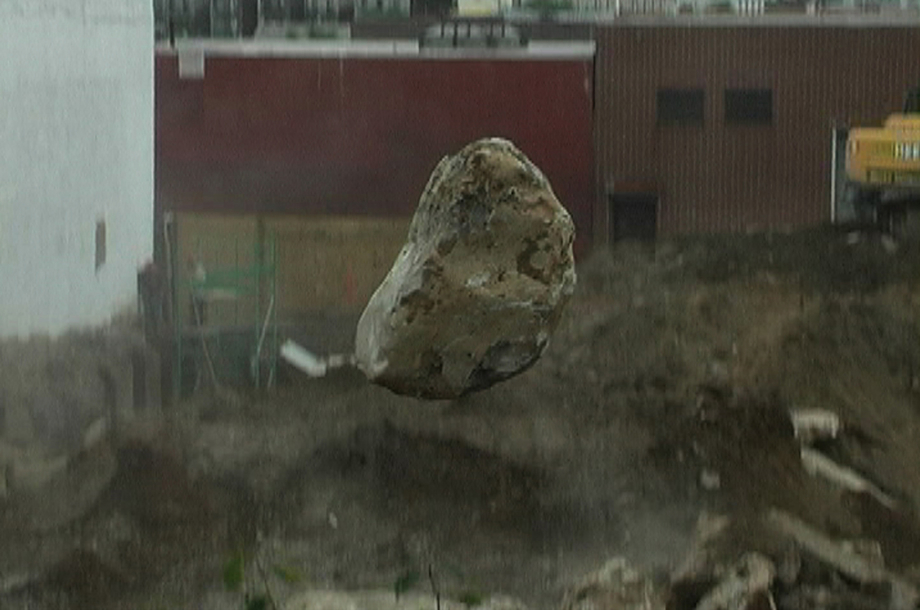 Man and Rock (excerpt from a new feature length work-in-progress “Gut Renovation” 2012)
Man and Rock (excerpt from a new feature length work-in-progress “Gut Renovation” 2012)
Su Friedrich, Digital video, color, sound, 7 mins, 2011
This excerpt, “Man and Rock,” is a somewhat comical depiction of a battle between men and nature. The men are the workers in a construction site across from my former home. The nature is an extraordinarily large piece of schist, the bedrock of New York. The battle took many days. The men won. – “Gut Renovation” (working title) is a feature length documentary about the transformation of Williamsburg, Brooklyn from an affordable neighborhood to a glass and steel canyon of massive, expensive and often ugly condos. – SF
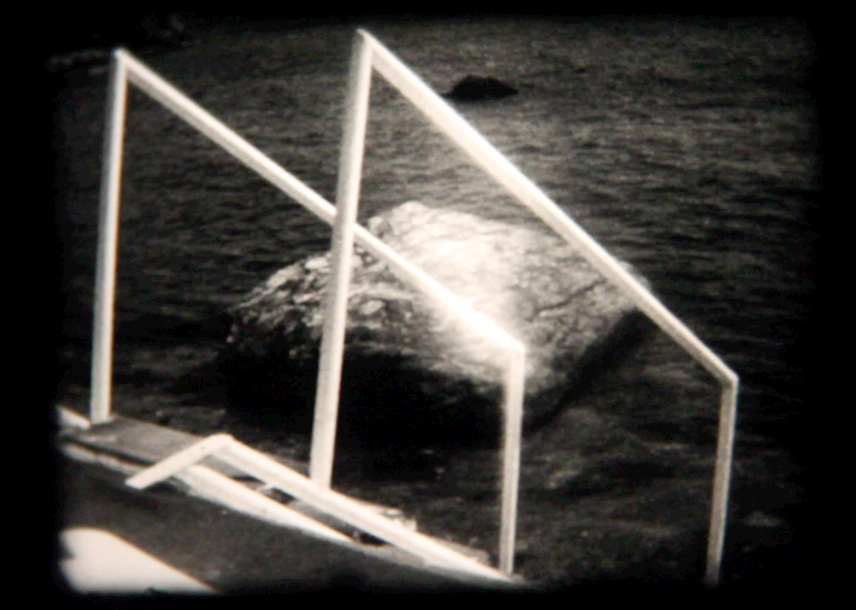 Island
Island
Allison Somers, Super 8mm transfer to video, b&w, silent, 2 min, 2011
Filmed on location on Büyükada island, Istanbul, Turkey, leisure and landscape conflate on a single reel of super 8 film.
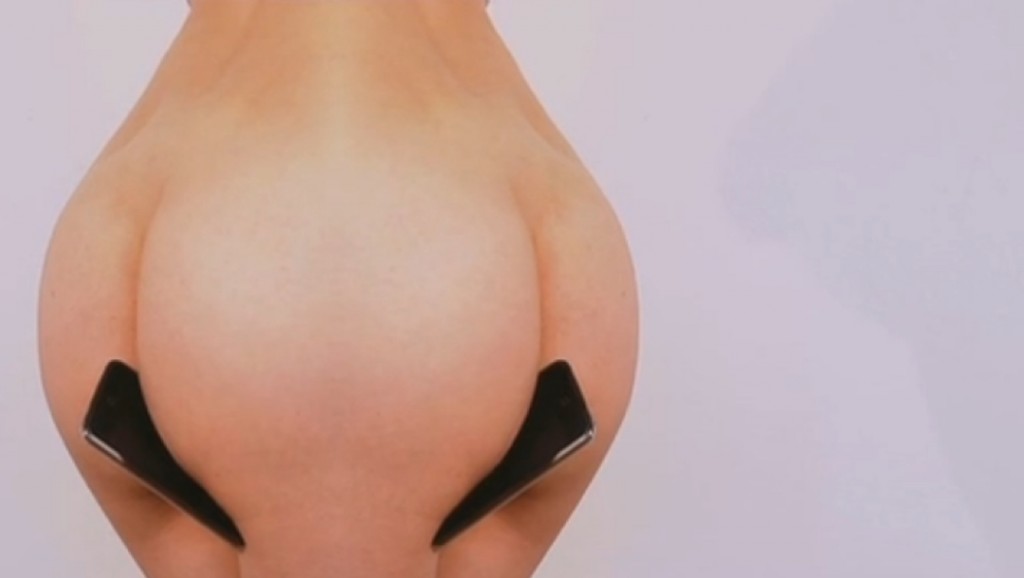 The Internet is Porn
The Internet is Porn
Agnes Bolt, video, color, sound, 4 minutes 45 sec, 2011
The video takes you through a typical day at the office, especially exploring the humor and perversion of Internet surfing.
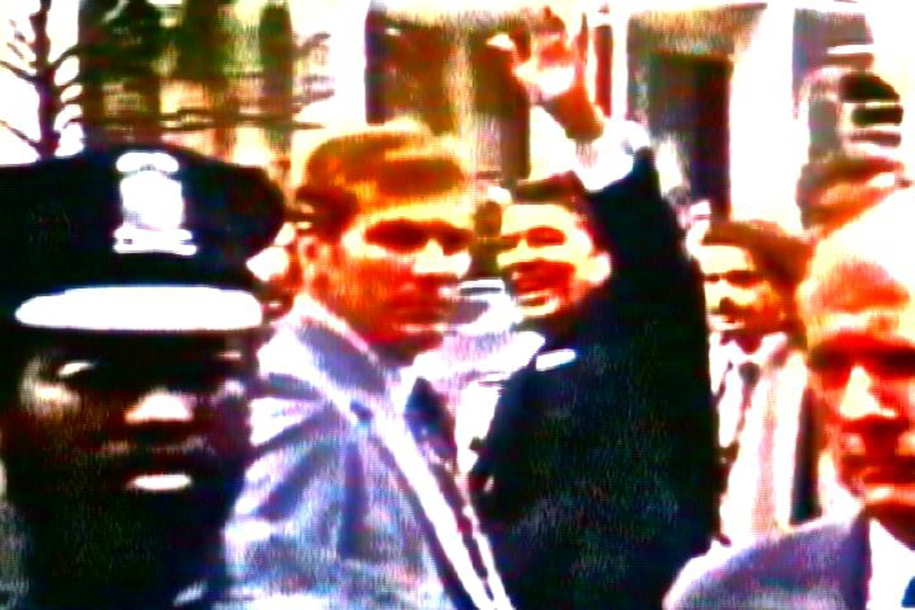 Knot 4
Knot 4
James Fotopoulos, digital video, color, silent, 13 min 45 sec, 2007
In 2007 I made a series of eight videos titled “Knots” – I imagined them as a combination of personal dream or memory knots along a rope and Aleksandr Solzhenitsyn’s The Red Wheel. In four of these videos I digitally re-worked footage of historical significance = the Saddam Hussein execution (Knot 3), Ronald Reagan assassination attempt (Knot 4), Yitzhak Rabin assassination (Knot 5) and Der ewige Jude (1940) (Knot 8). In the two assassination videos, Knot 4 and 5, I digitally enhanced and slowed the original footage = the first phase of the examination. Then I isolated shapes from the treated video and re-drew them into further abstraction with crude digital software = a second deeper phase of the examination = a probing or x-raying of the footage. In my recent feature Alice in Wonderland (2010) I would use this technique again, minus the software, by isolating parts of Lewis Carroll’s photographs and re-drawing them with charcoal and graphite. — James Fotopoulos
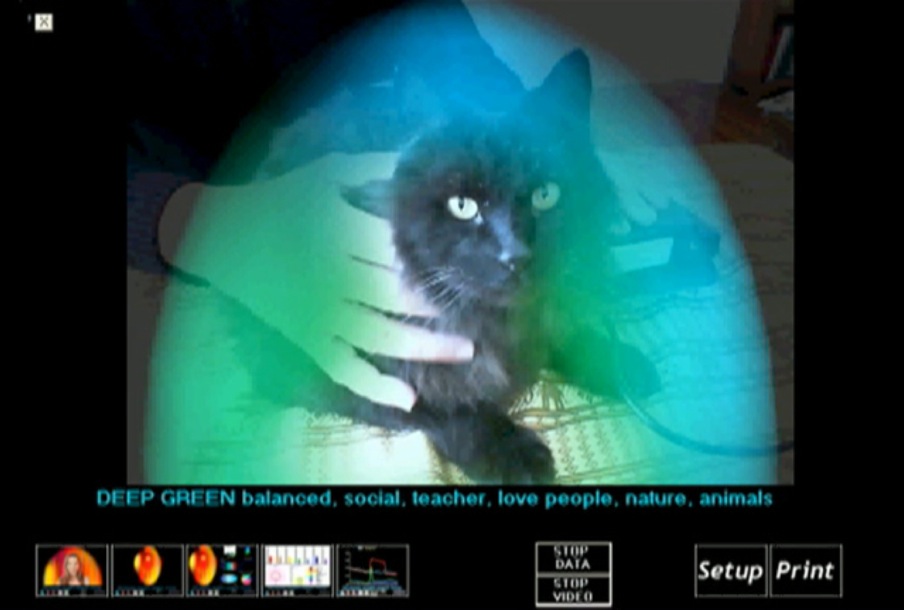 My Cat gets an Aura Reading
My Cat gets an Aura Reading
Peggy Ahwesh, video, col, sound, 1 min, 2011
My cat Claude was recovering from a car accident that nearly killed him and I thought it would be interesting to have his aura read. I wanted to see how he was feeling psychically and test for trauma or unhappiness. Fortunately, the cat seemed to be fine and pretty healthy. — P A
 Aurora Borealis
Aurora Borealis
Bradley Eros, 16mm film transfer to video, color, sound, 12 minutes, 2002
An homage to two lyrical surrealists of the cinematic collage, Joseph Cornell and Jean Painleve. Made entirely of science & nature footage, through a process of subtracting the original expository devices, and emphasizing the oneiric beauty and confusion of scale, where the microscopic is analogous to the astrologic, and the insertion of unexpected diversions and creatures creates nocturnal associations and uncanny perceptions. A work more alchemical than clinical, focused on decay and regeneration, with a hypnotic soundtrack by Messiaen. – BE
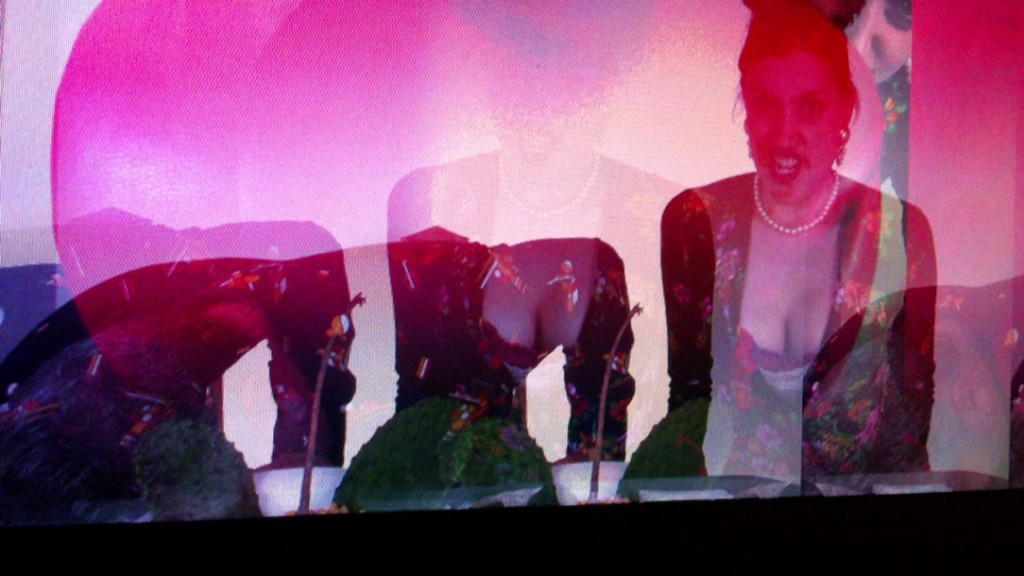 Moving Image #1
Moving Image #1
Raul Vincent Enriquez, DHTML, PNG Image, Web Browser, Duration 02:18, 2011
This is my first attempt to translate my new DHTML/HTML5 moving image work over to HD video. Special thanks to Maggie Hoffman of Radiohole.
 Reversal Bennetton
Reversal Bennetton
Andrew Lampert, 16mm-on-video, color, sound, 5 minutes, 2011
While browsing at the Chelsea thieves market in 2004, Andrew Lampert blindly purchased multiple hours of raw camera footage from a mid-90s Benetton ad shoot. He immediately embarked on a life-long project to use every single frame of film found in those cans. REVERSAL BENETTON is another addition to this ongoing series, and features music performed by Lampert.
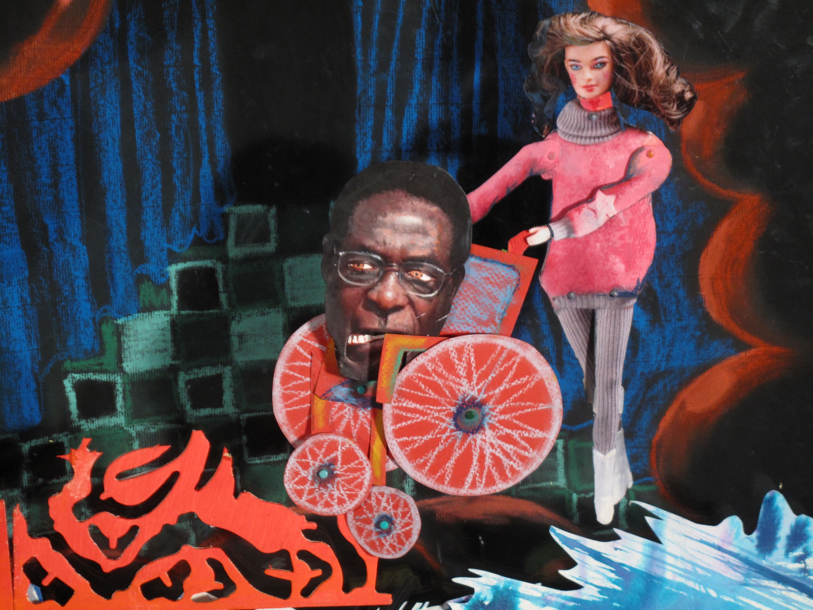 Dolls vs Dictators
Dolls vs Dictators
Martha Colburn, originally in 16mm, color, sound, 11 minutes, 2010
Commissioned by the Museum of the Moving Image, Queens NY, to inaugurate its new Video Screening Amphitheater, DOLLS VS DICTATORS is based on Colburn’s photographs of the Museum’s unparalleled collection of dolls, toys, and other licensed merchandise.

The Birth of Zerak
Nick Zedd, video, col, sound, 5 minutes, 2011
Caesarean birth of Zerak Zedd in Mexico City
_
Aptly described as a media bricoleur, Peggy Ahwesh’s work combines a variety of experimental narrative and documentary genres, often with improvisational performance. Utilizing found footage, noise, the arcane and a variety of obsolete, low end technologies Ahwesh’s work is primarily an investigation of cultural identity and the role of the female subject. Ahwesh’s practice insists on political and social topicality, handled with theoretical rigor, while at the same time using humor and the absurd in an open embrace of the inexplicable. Subjective experiences of the individual, the mundane and discourses of non-closure are subjects of her work. Feminist theory and film theory are applied to traditionally female-gendered themes-home movies, family drama, relationships and confessions-while turning the conventions of realism on end. Peggy Ahwesh came of age in the 1970’s with Super 8mm amateur filmmaking, feminism and the punk underground in Pittsburgh. She is a graduate of Antioch College. Currently, Ahwesh is Chair of the Film & Electronic Arts Program at Bard College. Her film and video work is distributed by EAI, New York and Lightcone, Paris. Ahwesh’s films Martina’s Playhouse (1989), The Deadman (made with Keith Sanborn, 1989), Strange Weather (1993) and Nocturne (1998) are in the permanent collection of the MOMA. Ahwesh has received grants from the Jerome, Creative Capital and Guggenheim Foundations and NYSCA. In 2000 she received the Alpert Award for film/video.
Michel Auder, born in Soissons, France, was made to join the military at a young age as a photographer during the Algerian war. Returning to Paris, he started to make films. Later he joined a group of filmmakers during “May 68”. Arriving in New York City in 1969, he was the first to employ the video camera as his primary art making device. Since then, his work has spanned a variety of styles and genres all shot on video. His photography and video has exhibited widely in North America and Europe, at such venues as the Whitney Museum, MoMa,The Stedelijk Museum in Amsterdam, Centre Pompidou in Paris, Newman Popiashvili Gallery, Participant Inc and many others. His work was included in the 5th Berlin Biennial, the Athens Biennial, Kunsthalle, Basel, Switzerland and solo exhibitions at Cubitt in London and at Krabbesholm in Skive, Denmark. Michel Auder taught in the sculpture department at Yale University and was appointed critic at Yale School of Art in 2009.
Agnes Bolt is an interdisciplinary artist based in Brooklyn, NY and Pittsburgh, PA. Her work often explores the gaps created through changing values, evolving modes of communication and social habits. Her projects have most recently manifest themselves all over the Romanian countryside, intervened into the homes of art collectors and were projected at the Internet Pavilion, 54th Venice Biennale. She is a recent recipient of the Heinz Foundation Artist Grant, the AW Mellon Grant, and a Fine Foundation Grant and has a book about 2 strange towns coming out in the Fall. Her work was recently reviewed in Harper’s Magazine and the Washington Post.
Martha Colburn is a filmmaker and artsit. She is best known for her animation films, which are created through puppetry, collage, and paint on glass techniques. She has made over forty films since 1994. Colburn has also been fervently involved in playing music. One out of numerous groups she has been a part of is The Dramatics, a band she formed in Baltimore with Jason Willett. Recently in her career, Colburn has made sculptural/video installation work and experimented with integrating her films with musical performance. Yet music and film have always shared a deep connection within Colburn’s work. She has made films for System of a Down singer Serj Tankian, Jad Fair of Half Japanese, contributed animation to the documentary The Devil and Daniel Johnson, and VJs for the band Deerhoof. She has performed with live projections and bands at The San Francisco Museum of Modern Art (2009), The Rotterdam Film Festival (2010), Anthology Film Archives (NYC), and many others. In 2010 her film Triumph of the Wild was included in the collection of the Philadelphia Museum of Art and the Museum of Modern Art in New York.
Raul Vincent Enriquez works in various media, including photography, animation, live performance, moving image, beans & salsa, and sound. He has a history of hosting events, such as the Bean and Cheese Burrito Party which fosters mastication among audience members. In recent years, he has showed work at the New Museum (NYC), Queens Museum (NYC), Times Square (NYC), Photo Miami/LA Art Fair, The Stephan Cohen Gallery (LA), Scope (NYC/London/Miami), Conduit Gallery (Dallas), Los Angeles Contemporary Exhibitions, New York Theatre Workshop, NYU Performance Studies Program, and Cal Arts (LA), among others. Born in Los Angeles, California. Lives and works in Brooklyn, New York.
Bradley Eros works in a variety of media including: experimental film & video, collage, photography, performance, sound, text, expanded cinema & installation. He has exhibited at the 2004 Whitney Biennial & The American Century, The New York Film Festival, London Film Festival, MoMA, The Kitchen, Pacific Film Archives, SF Cinematheque, Performa, The Andy Warhol Museum, Arsenal (Berlin), Lightcone (Paris); and also works with the New York Film-makers’ Cooperative, Anthology Film Archives, & Spectacle. Bradley Eros is also a catalyst, actively involved the diverse New York experimental film scene, initiating, exhibiting and curating at a multitude of spaces & venues, collectives & festivals, including The Kitchen, Exit Art, Millennium, Anthology, ABC No Rio, Galapagos/Ocularis, NY Underground Film Festival, Migrating Forms, Issue Project Room, PS1, Collective for Living Cinema, Light Industry, Participant Inc, White Box, Franklin Furnace, PS122, Cabinet, Colab, and most especially, the Roberta Beck Mercurial Cinema, at Collective Unconscious. His work is also in the collection of the Donell Media Center, Film Library.
James Fotopoulos is a boldly unique filmmaker who makes dark, cerebral and often impenetrable works. Ed Halter, film critic and former director of the New York Underground Film Festival in an 2002 article “Horror, Violence, Sociopathic Loners: The Films of James Fotopoulos Play Downtown” in the New York Press described Fotopoulos as “the most important new director I’ve seen in many years.” Since then, the prolific Fotopoulos has made hundreds of films and videos, expanding from dialogue and narrative forms to more abstract works featuring drawings and other artworks. His film and video work has been shown internationally at many festivals and sites including the International Film Festival Rotterdam, the New York Underground Film Festival, the Sundance Film Festival, the Walker Art Center, the Andy Warhol Museum, the 2005 Whitney Biennial among others. With Grove Press founder Barney Rosset, he created an experimental video biography on Rosset and an adaptation of an unpublished screenplay by Eugène Ionesco, of which the latter premiered at the New York Museum of Modern Art. He has also had a retrospective of his work at Anthology Film Archives and published many books of drawings. He currently resides in Philadelphia, Pennsylvania.
Su Friedrich began filmmaking in 1978 and has produced and directed seventeen 16mm films and videos, including From the Ground Up (2007), Seeing Red (2005), The Head of a Pin (2004), The Odds of Recovery (2002), Hide and Seek (1996), Rules of the Road (1993), First Comes Love (1991), Sink or Swim (1990), Damned If You Don’t (1987), The Ties That Bind (1984), Gently Down the Stream (1981), and Cool Hands, Warm Heart (1979). With the exception of Hide and Seek, which was co-written with Cathy Quinlan and shot by Jim Denault, Friedrich has been the writer, director, cinematographer, sound recordist and editor of all her films. Friedrich’s films have won many awards and have been widely screened in the United States, Canada and Europe. Her work is in the collection of the Museum of Modern Art, the Art Institute of Chicago, the New York Public Library, the Royal Film Archive of Belgium, the Centre Pompidou in Paris, the National Library of Australia, as well as many university libraries. Friedrich is currently Professor of Visual Art in the Peter B. Lewis Center for the Arts at Princeton University where she teaches film/video production. Friedrich made her gallery debut at Microscope in the spring of 2011 in a solo show “re:working” featuring early photography and new filmstrip prints.
Andrew Lampert isn’t as concerned with making films or videos as he is with creating moving images. He’s happy to work with whatever is on hand, whether it be Super 8, 16mm, video, an audio recorder or a pen. As influenced by writing and music as he is by movies, if not more so, Lampert’s work regularly investigates various notions of play by using a wide range of humorous, and highly formal, approaches. Whether producing short single screen works, expanded cinema performance pieces incorporating films, live music, texts and performers, or installations, Lampert is fascinated by the present moment, as experienced by the viewer, and as constructed through the use of image and sound. Born in the mid-70s in the Midwest, Andrew Lampert has staged performances and exhibited his films/videos at The Whitney Museum of American Art, The Getty Museum, PS1, The British Film Institute, The Kitchen, The Rotterdam International Film Festival, Kill Your Timid Notion Festival, Light Industry, The Poetry Project, The Brakhage Symposium, Mitchell Algus Gallery and many other venues here and abroad. He lives in Brooklyn.
Jonas Mekas was born in 1922 in the farming village of Semeniškiai, He arrived in NYC in 1949 as a displaced person following World War II and immediately borrowed money to purchase his first Bolex camera. He soon was deeply involved in the American Avant-Garde film movement. In 1954, together with his brother, he started Film Culture magazine, which soon became the most important film publication in the US. In 1958 he began his legendary Movie Journal column in the Village Voice. In 1962 he founded the Film-Makers’ Cooperative, and in 1964 the Film-Makers’ Cinematheque, which eventually grew into Anthology Film Archives, one of the world’s largest and most important repositories of avant-garde cinema, and a screening venue. Since 2000, Mekas has expanded his work into the area of installations and photographic prints. He exhibits and screens worldwide including at PS1, MoMA, Centre Pompidou Paris, Museum Ludwig Cologne, Serpentine Gallery London, Documenta Kasel, Venice Biennale, the Moderna Museet (Stockholm), the Musée d’Art moderne de la Ville de Paris and many others.
Allison Somers was born in Los Angeles and is now based in Brooklyn. She works primarily with photography and moving image and has previously exhibited at: Participant Inc., Emily Harvey Foundation, Front Room Gallery, 80WSE Gallery, Scaramouche Gallery and others. Microscope presented Somers’ first solo exhibition “Black & Blue” in the Spring of 2011. Somers received an MFA from New York University in 2010.
Nick Zedd is a film-maker, painter, writer, actor, political satirist, and a leading figure of the Lower East Side cinematic revolution, the Cinema of Transgression – a term he coined in a manifesto proclaiming “a new generation of filmmakers daring to rip off the stifling straight jackets of film theory in a direct attack on every value system known to man.” Zedd’s provocative, humorous, yet often intensely beautiful films have transcended their cult origins to influence mainstream culture from music videos to John Waters and Quentin Tarantino. Throughout the years, he has collaborated with Lower East Side artists including Richard Kern, Lydia Lunch, Kembra Pfahler, Lung Leg, Annie Sprinkle, Taylor Mead, Beth B, Reverend Jen (Electra Elf public access tv series), and others. Zedd’s works have been shown world-wide – often with great resistance — and are in the permanent collection of the Museum of Modern Art (MoMA). For the past three years, Zedd has been working intensely on a series of oil paintings which were presented during his solo exhibit “Eye Transgress” at Microscope Gallery in January 2011. His latest works will be on view in Independence Returns.

The Whale Beach: Jerusalem 1, James Fotopoulos, 2010, 9×12 inches, charcoal, graphite, chalk and crayon on paper
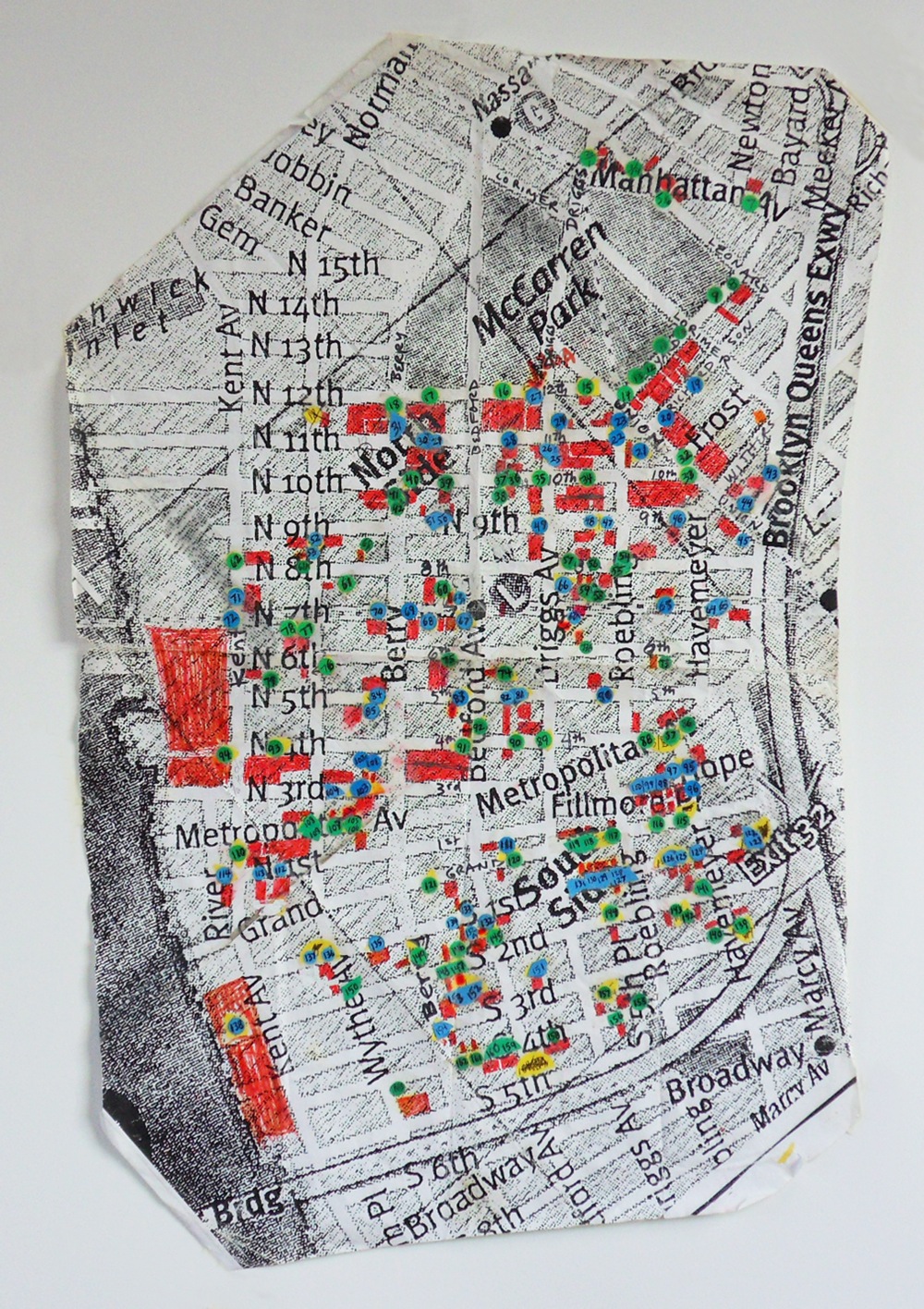
Map of New Construction in Williamsburg from 2005-2011, Su Friedrich, 22 x 14″, coloured dots on xeroxed paper, 2011
